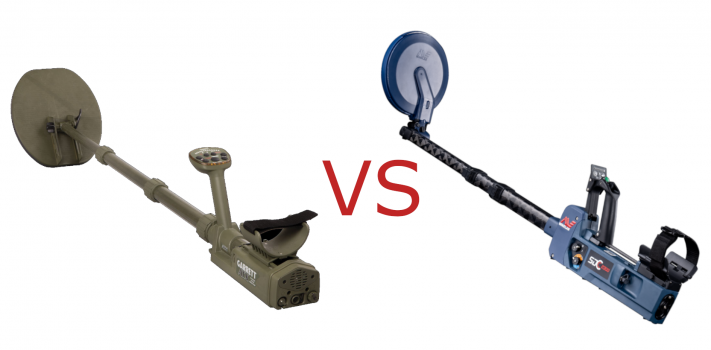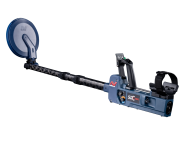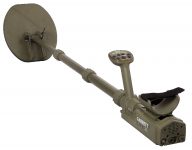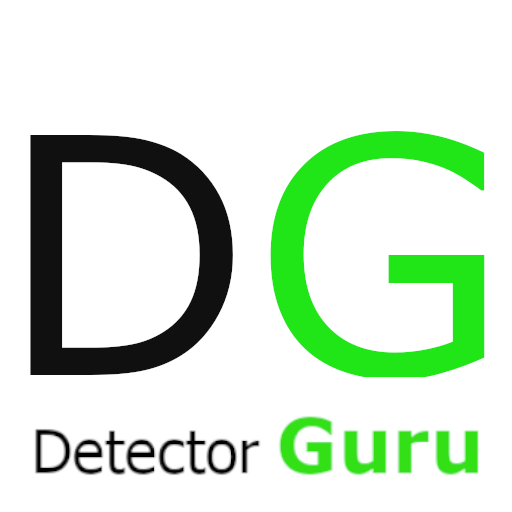
When it comes to chasing small gold in mineralized soils you better reach for a pulse induction metal detector. But which detector is worth your hard earned dollars? In this article we will be looking at the Minelab SDC 2300 vs Garret ATX.
Detector Overview
Here we have two gold detectors, Minelab’s SDC 2300 and Garrett’s ATX. Both are pulse induction detectors suited to finding small gold in highly mineralised soil. Minelab has developed MPF technology (Multi Period Fast) specifically for its SDC 2300, this according to Minelab allows the SDC2300 to find the small gold that VLF and other PI detectors leave behind.
The SDC 2300 has an 8” monoloop coil, this is a fixed coil and does not enable the user to change coils.
The ATX however comes with a 10″ x 12″ Double D, there are optional coils available to the ATX being the 11″ x 13″ DD closed coil and 11″ x 13″ Mono closed coil.
Mechanical design
Prospecting can be tough dirty business, so these detectors have been built rugged to handle tough conditions. Both based on a military platform, Garret has based theirs on the Recon Pro platform and maintained Khaki green on the ATX. Whereas Minelab, although based on their F3C platform have gone with a dark blue on the SDC 2300 instead of the khaki green. Each are submersible to 10 feet (3m) but will require you to purchase waterproof headphones separately.
When folded up into a compact size, is where the SDC 2300 edges out the ATX in its collapsed size and overall weight. When collapsed the SDC 2300 folds to only 15.7” (398.78mm) Compared to the ATX measuring 19.9” (505.46mm). Comparing both detectors with batteries, the SDC 2300 weighs 5.7 lbs (2.58kg) versus the ATX at 6.8 lbs (3.08kg). The folding action of Minelab’s SDC is quite impressive and we see the compactness of the SDC 2300 being a massive advantage for a lot of prospectors.
Comparing the handles it’s hard to not be excited by the way the SDC 2300 collapses and locks into place. Once the handle is locked, it also locks the shaft firmly into position. The ATX however is in a fixed position.
The SDC 2300 LED display is minimal in style and function, there are 9 LEDs to display size of the target and distance from the coil. There is a battery indicator in the middle, a noise cancel button to the left and an audio threshold level to the right. Ground balance is triggered by a green button just below the LED display. Minelab is able to keep the display less cluttered by having the detecting mode and sensitivity control on the side of the main body.
The ATX has a lot more going on, on its display. There are 13 LEDs that display signal strength when in primary mode, when the user changes a setting these LEDs will indicate to the user what has been selected. When in primary mode the white letters show the buttons function. These are the Iron check, frequency scan, sensitivity, threshold and retune/pin point.
Secondary mode requires the user to press the shift button in order to change the settings, as with primary mode the LEDs will show the user what changes have taken place. Secondary mode functions are shown by the letters in red, these are Ground balance, ground track, discrimination, detection mode and volume.
On to the shafts, the SDC 2300 has a square full carbon fibre shaft with lever style cam locks. The ATX has a plastic shaft with stem nuts to lock it in place. Both units have 3 sections to accommodate most user heights.
Usability
Straight out of the box, setup from collapsed to extended is a fast process for both detectors, there is no assembly required. For wow factor the SDC 2300 definitely has the upper hand, but the ATX might be slightly quicker in deployment.
As far as set up goes for detecting, the SDC2300 is as simple as it can get, even Grandma can switch it on and get detecting. The ATX however is slightly more complicated, especially with the secondary functions of the LED display. You will need to sit down with the ATX manual over a coffee and have a good read before you set out prospecting to avoid disappointment.
Weight difference with batteries loaded is 1.2lb (544g), the SDC 2300 being 5.1lbs (2.3kg) vs the ATX at 6.3lbs (2.9kg). That and the combination of ergonomic design makes the SDC 2300 feel a lot lighter out of the two.
Battery life for both detectors has been reported in as around 6 to 8 hrs, which is a good solid day of prospecting for most. In a pinch, both detectors can use alkaline batteries off the shelf.
Performance
One of the most common comments from new detectorists is that these units pick up too much trash. This is the way PI gold detectors work and if you don’t want to miss any gold, you will be doing a lot of digging and trash clearing.
Some users complain of the ATX being prone to EMI and highly mineralised soils requiring users to turn the sensitivity way down. This is where the SDC 2300 excels, being far more sensitive on small gold in those conditions.
Knocking can be frustrating when detecting in small bushes or uneven hard surfaces, the ATX can be more susceptible to falsing from knocks, this can be helped somewhat by being a bit more careful with controlling the coil placement, speed etc. The SDC 2300 doesn’t seem to suffer the same issue with knocking and can be happily swung through bushes and over rocks.
Warranty
The warranty periods on both detectors are excellent, Minelab offers a 3 year warranty on the SDC 2300 and the Garrett ATX has a 2 year warranty. Just remember that most warranties won’t cover normal wear and tear.
Conclusion
Garretts ATX is a good detector and with the various coils available can cater for a lot of different users. It does take a little while to get used to the controls and functions and does have an iron check function (better to dig than be sorry!). But it is heavy and less refined, not everyone will like its rugged looks. But the price point is good and it is seemingly carving out its own little niche on beaches.
The bottom line is the SDC 2300 is a more expensive machine than the ATX, but it excels in so many area’s. The design and refinement is something different and looks exciting, but it feels comfortable to use for extended periods due to its ergonomics. It has very quiet operation that lets you hear just about everything. Not only that, its just say easy to use but doesn’t limit what you can find.
The SDC was designed for a specific task and it does it exceptionally well, and will either complement your deeper gold hunting detector or be an excellent stand alone for bringing home the ‘small’ bacon.








